Slices of life
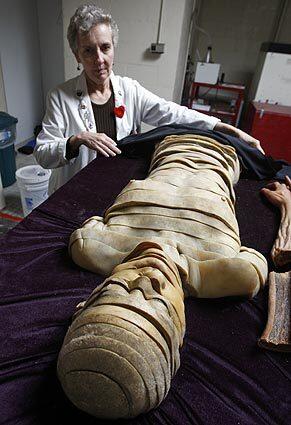
Ann Harmer, co-director of the Plastination Lab at Orange Coast College, uncovers “Bernadette,” a 23-year-old female body preserved with a polymer like those used in Body Worlds 3, now on display at the California Science Center in Los Angeles. The 42 sections reveal the internal structure of the head and torso. (Don Bartletti / Los Angeles Times)
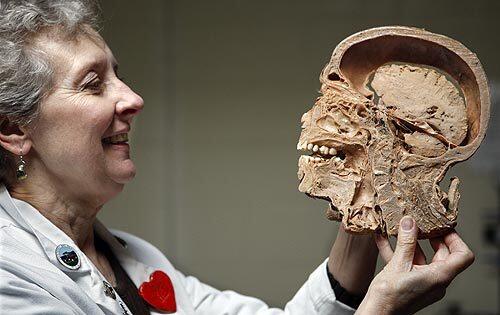
Ann Harmer holds a plastinated section of a human head. The inch-thick slice reveals biological structures that are preserved with polymer. The process has reduced the size of the brain but bone, nerves, blood vessels, muscles, teeth and skin are accurately preserved. (Don Bartletti / Los Angeles Times)
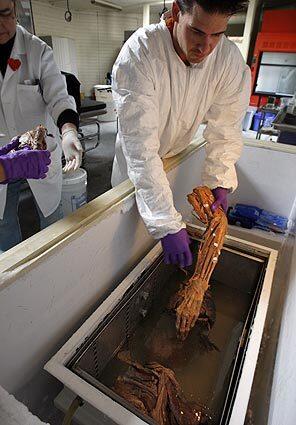
Student laboratory technician James Coopman places a human arm in a polymer-filled vat. Skin has been removed to reveal the internal structures. The vat will be vacuum sealed and all fluids in the body parts will be replaced with polymer during the weeks-long process. (Don Bartletti / Los Angeles Times)
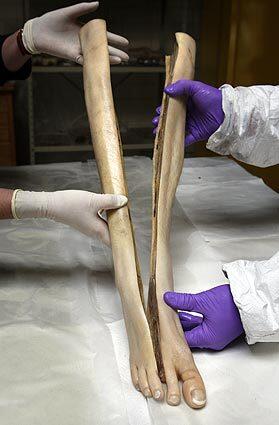
The plastination-preserved right leg of a 23-year-old female. The procedure replaces water in the body with polymer. The dissection reveals the perfectly preserved bone, tendons and muscles. (Don Bartletti / Los Angeles Times)
Advertisement
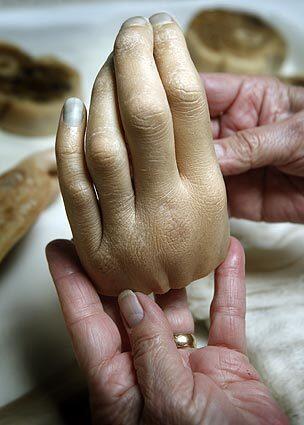
The preserved hand of a 23-year-old female. Skin texture and softness, fingernails, the finest hairs and even muscles inside have been preserved with polymer. (Don Bartletti / Los Angeles Times)
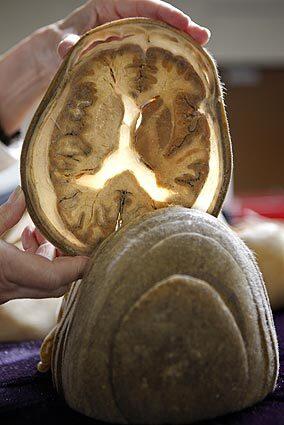
An inch-thick slice of a head from just above the eyebrows reveals the cranium structure and brain inside. The body was preserved at the Plastination Lab at Orange Coast College. (Don Bartletti / Los Angeles Times)
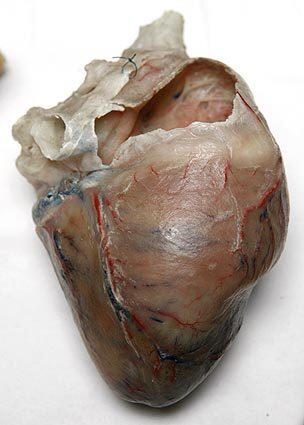
The plastinated heart of a greyhound reveals veins and arteries. The process replaces all organic fluids with an inert polymer. The softness of the muscular organ is preserved in a lifelike condition, and it’s completely odor-free. (Don Bartletti / Los Angeles Times)
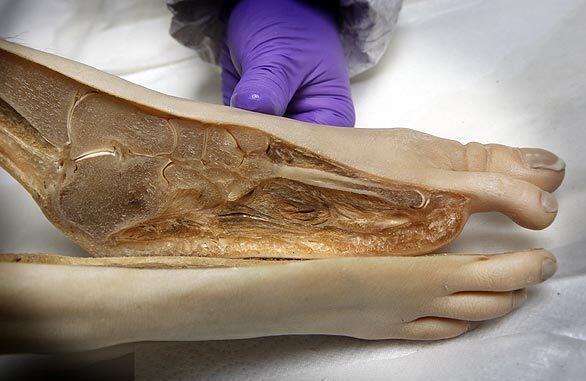
The plastination-preserved foot of a 23-year-old female. (Don Bartletti / Los Angeles Times)
Advertisement
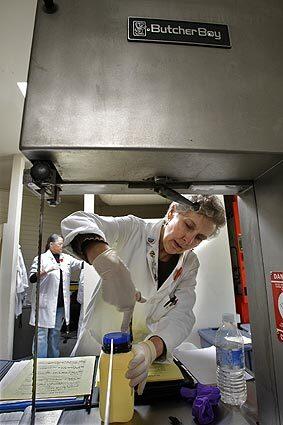
Ann Harmer, co-director of the Plastination Lab at Orange Coast College, prepares a bottle of polymer. The band saw is used to slice bodies open to reveal their inner structure and facilitate the replacement of body fluids with polymer. (Don Bartletti / Los Angeles Times)







